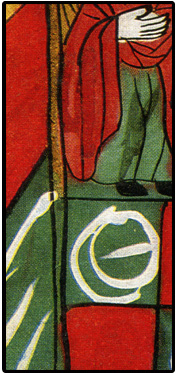

These guidelines describe how to mark up the text of a charm in Romanian and in English, in order to enter it into the text fields of the Romanian Love Charms database. The markup is based on the features of the charms that have already been entered into the online database. If new requirements arise, the markup and the elements used to indicate it may be supplemented or changed.
See the DTD described in these guidelines.
In order for charms to display correctly, it is important to use the XML elements exactly as they are described in this document. Spelling and capitalization of element and attribute names are important, as is the use of brackets, slashes and quotation marks. Finally, the order and nesting of elements has to be observed.
An element is demarcated by a start tag and an end tag which surround the element text. Tags are identifiable because they are enclosed in angle brackets (<..>). The start tag looks like this <tag> and the end tag like this </tag>. This means that you cannot use angle brackets for purposes other than to mark a tag. A special notation exists if it is necessary for angle brackets to appear as part of the text: < stands for < and > stands for >.
Elements have attributes that provide additional information. For example, it may be useful to indicate the number of a note, or the language of a word or phrase. Attributes appear in the start tag, they are not repeated on the end tag.
<tag id="02"> ... </tag>
<tag n="red"> ... </tag>
An element can contain another element, but it cannot overlap with another element. For example, this is allowed:
<verse>
<l>...</l>
<l>...</l>
</verse>
but this is incorrect:
<verse>
<l>...</verse>
...
</l>
The text of a charm is marked up with a <charmText> element, and consists primarily of verses and techniques.
Verses, the spoken part of a charm, are enclosed in <VR> elements. Inside a <VR> element, there is most often a series of line <l> elements.
<charmText>
<VR n="1">
<l>...<N id="01" /></l>
<l>...</l>
...
</VR>
</charmText>
Each <VR> element has an n attribute, the value of which is the sequential number of the verse component within the charm. Thus, the first <VR> in a charm has an n attribute with a value of 1, the second has a value of 2 and so on. <VR n="1">...</VR>
Additional elements that can appear inside an <l> element:
Techniques, the descriptions of actions accompanying a charm, are contained in the <TR> element. All text inside a <TR> element is contained in paragraph <p> elements. If there is a note, it should be marked using the <N> element. <N> elements should always appear inside a <p> element. Otherwise, <N> behave in Techniques just as they do in Verse.
<TR n="1">
<p>...<N id="01" /></p>
<p>...</p>
...
</TR>
Each <TR> element has an n attribute, the value of which is the sequential number of the verse component within the charm. Thus, the first <TR> in a charm has an n attribute with a value of 1, the second has a value of 2 and so on.
Additional elements that can appear inside a <p> element:
<TR n="1">
<p>...</p>
<p>
...
<verse>
<l>...</l>
<l>...</l>
</verse>
</p>
</TR>
Some charms are not collected directly from informants, but are described second hand, or are derived from songs. These charms are not marked with <VR> and <TR>. Instead, songs are marked with <SR> and narrative paragraphs are marked with <NR>. Songs and narrative paragraphs contain paragraphs (<p> elements).
Charms in English are marked up identically to charms in Romanian with the following few differences:
Elements are numbered in the same way, and <N> elements follow the same rules as in Romanian. Lines, paragraphs and all other elements that are inside these elements are the same as in Romanian.
Note text appears after the <charmText> element, as a series of <NOTE> elements. The <NOTE> element always has an id attribute <NOTE id="01">, where the number of the id attribute corresponds to the number of the id attribute of the <N> marker. All text within a note is enclosed in paragraph <p> elements. The <p> elements can contain <q>, <term>, and <verse> elements, just as the paragraphs in a technique do. They may not, however, contain any <N> elements, since there should be no note markers within notes.
<charmText>
(verses and techniques)
</charmText>
<NOTE id="01">...</NOTE>
<NOTE id="02">...</NOTE>
<NOTE id="03">...</NOTE>
<NOTE id="01">
<p>...</p>
<p>...<q>...</q> </p>
<p>
...
<verse>
<l>...</l>
<l>...</l>
</verse>
...
</p>
</NOTE>